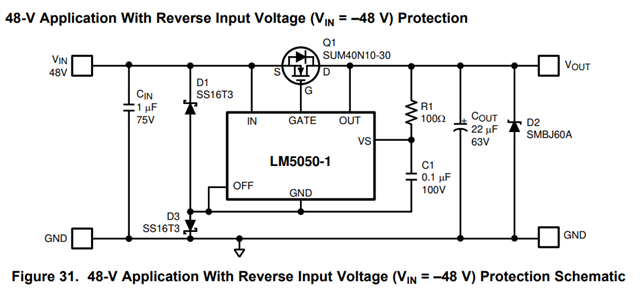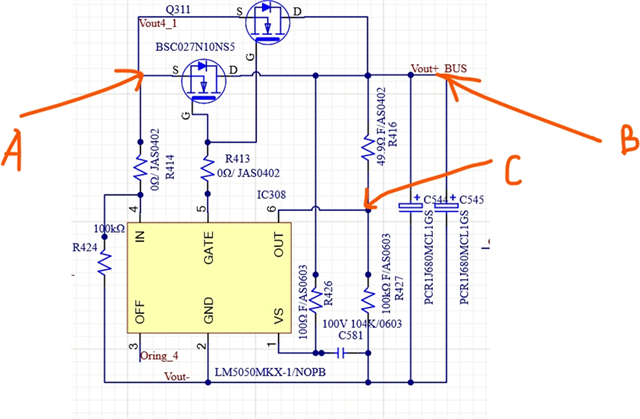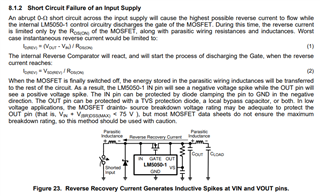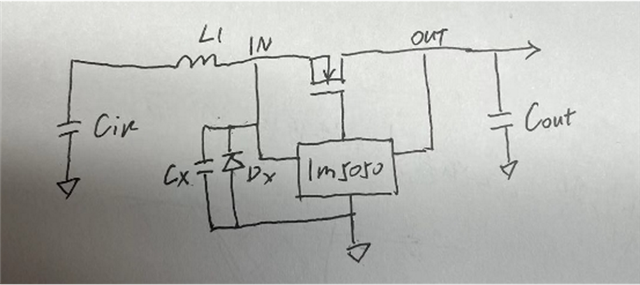Hi Team
I sent you about LM5050-1, because customer meets issue.
so far I use it as oring-fet controller. Simple description for my application as following:
the maximum input voltage is 50 volts; numbers of parallel module is four, and every module output 40 amps; but LM5050-1 is always damaged when I do test of shorting the input voltage recently. the result is that the IC's IN/GATE/OUT will become low resistance or burned.
I check the datasheet of figure 31, which is 48-V application with reverse input voltage protection schematic.
I want to know the usage of component D3,
- whether is specified to design for the high input voltage for example above 48V input voltage?
- if Vin is lower than 5V, and Vbias connected to Vout with RC filter in this application may cause this problem.





